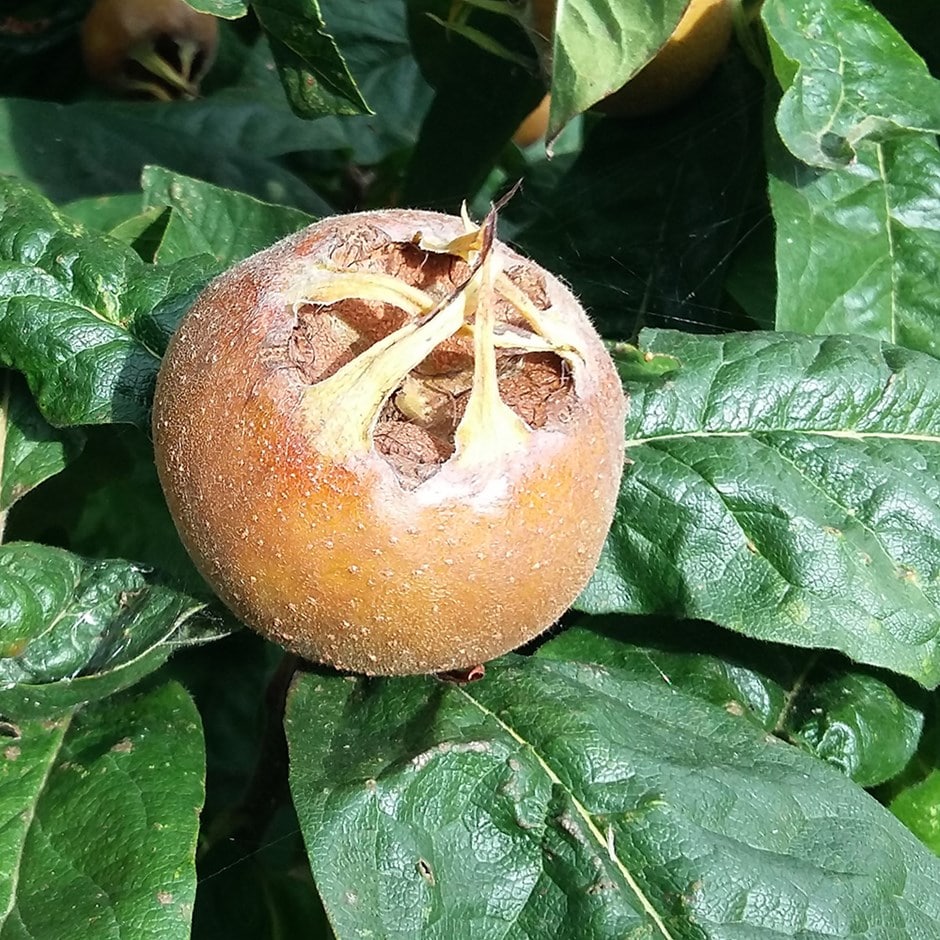medlar 'Westerveld'
medlar
This tree is deciduous so it will lose all its leaves in autumn, then fresh new foliage appears again each spring.
- Position: full sun or light shade
- Soil: moderately fertile, moist but well-drained soil
- Rate of growth: slow to average
- Flowering period: May to June
- Hardiness: fully hardy
A modestly slow-growing small tree with a distinctive appearance, characterised by heavy main branches and an irregular, flat-topped crown. Its leaves are finely serrated and may be covered in soft hairs when young, turning reddish brown to deep golden yellow in autumn. The tree bears large, brown, hard fruits that are only edible when they begin to break down, typically after the first frost. 'Westerveld' produces slightly larger fruit than the species, ensuring a plentiful annual crop, and reliably yields fruit well-suited for making medlar jelly. Expect a bountiful harvest from October to early November. With its gnarled trunk reminiscent of an olive tree, the 'Westerveld' medlar, once an additive to beer before hops, brings a touch of medieval charm to any garden.
When planting your medlar, prepare a hole up to three times the diameter of its root system. Fork over the base of the pit in readiness, incorporating plenty of organic matter into the backfill and planting hole. Avoiding frozen and waterlogged soil, trees should be planted out as they arrive. If you've ordered a bare root tree, soak the roots in a bucket of water for half an hour prior to planting, or if this is not possible, they can be heeled in temporarily, covering their roots with soil, or potted up. Choose a sheltered spot to protect emerging blossom. Remove dead, diseased and crossing branches while the tree is dormant during the winter months, shortening any overly long branches so they don't droop. After picking the fruits, they should be left to ripen for several weeks until the flesh has turned brown, soft and sweet and can be scooped out with a spoon.

